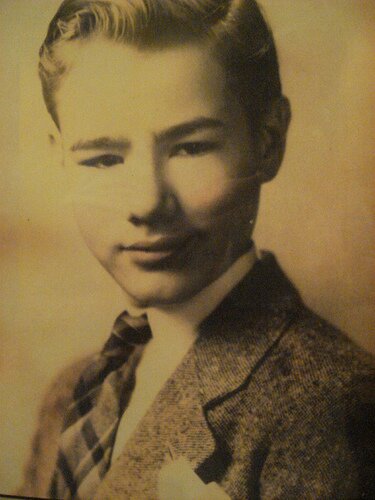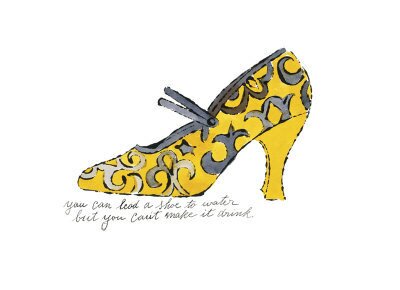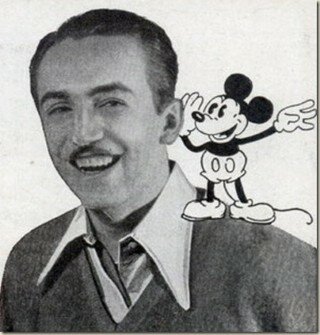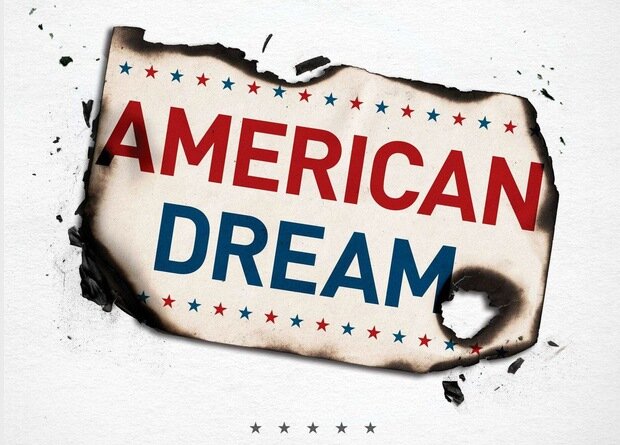Don’t think about making art just get it done. Let everyone else decide if it’s good or bad, whether they love it or hate it. While they are deciding, make even more art. – Andy Warhol
The Man Behind the Paintings: Who is Andy Warhol?
Andy Warhol is one of the most influential (and controversial) artists of all time; most famous for his pioneering of the Pop Art movement. Before Warhol’s time, the visual arts movement was restricted in the sense that it ignored modern and consumerism elements. But now, Pop Art is one of the most popular and celebrated forms of art today. And that’s because of Warhol’s exploration into celebrity culture and advertisement.
Warhol now boasts the largest museum dedicated to a single artist in the whole of the United States of America. As well as having painted some of the most expensive and famous pieces of art in all time, he had published multiple books including “Popism: The Warhol Sixties” and became a key figure for gay liberation before it’s height of movement.
But what is most interesting to me is not the achievements that this artist reaped as the rewards of his success and talent. What’s interesting to me is how a single commercial illustrator became the leading figure for a revolution. How a boy, who once was bed-ridden as a child and an outcast from his classmates, climbed the chain and used his talents in sculpture, film, photography, print making, painting to transform the world of art.
For as long as there has been creative, there have been entrepreneurial people whose sole mission in life is to shake up the world of visual arts. But very few people have a mind special enough to revolutionize or create an artistic movement. And that’s why I chose to write about Andy Warhol today, because that’s just what he did.
Pittsburgh, Painting and Illness: The early life and times of Andy Warhol
Andy Warhol was born on the sixth of August 1928 to Julia Zavacka and Andrej Varhola in Pittsburgh, Pennsylvania. Julia and Andrej’s first child died before they immigrated to the US. But they had two other sons after their first, John and Paul, of who were significantly older than their younger brother Andy. Andrej Varhola was a coal miner, his wife Julia a stay-at-home mother.
 Warhol was extremely close to his mother. Whilst his brothers and classmates would play outside together, Warhol would stay inside and watch his Mother painting family furniture, selling small figures she had created by hand and showing him how to trace and print images.
Warhol was extremely close to his mother. Whilst his brothers and classmates would play outside together, Warhol would stay inside and watch his Mother painting family furniture, selling small figures she had created by hand and showing him how to trace and print images.
In his third year of school, Andy was diagnosed with Sydenham’s chorea, a disease that attacks the nervous system. This disease causes involuntary movements and was caused by the after effects of scarlet fever. This illness had a significant effect on Warhol and caused the young boy to become a hypochondriac and develop severe fears of hospitals, nurses and doctors.
Throughout most of his childhood, Andy Warhol was bed ridden and ill. He became a lonely character, outcast by his peers, but kept close bonds with his mother throughout his adolescent years. This time was important for the young artist’s developments as it was these years that he grew strong introspection skills and collected prestigious pictures of movie stars. At this early age, Warhol was already showing a wonderful talent for drawing.
When Warhol was thirteen his father died in a tragic accident, his dying wish was for Andy to continue his education to college. In 1945, three years after his death, Andy was accepted in Carnegie Institute of Technology to study commercial art; the first of his family to go beyond high school education. He almost failed his first year, but a professor who had a soft spot for the young boy allowed him to enroll in a summer class.
In his spare time, Andy worked alongside his brother with fruit and vegetable selling where he could often be found sketching on the spot for customers. His aspiration was to become a teacher through but these plans were put to one side when Andy moved to New York City to begin a career in magazine advertising and illustration.
In a Pop World of His Own: How a magazine illustrator shapes the future of art forever…
In the 1950’s Andy Warhol began to build his prestige in the art world with ink drawings of shoe advertisements. These drawings were drawn in a casual, loose blotted-ink style and received an abundance of press admiration for their unique approach for the time.
The drawings, spotted soon after by RCA Records, proved successful in starting the budding artist’s career. He was hired by the company, along with another budding young artist, to design promotional materials and album covers to aid the expansion of record industry and the invention of vinyl records. This was an opportunity that allowed Warhol to truly begin experimenting with his approach to art and he became an early adopter of the silkscreen printmaking process and exhibition of commercial objects.
 Soon after working with RCA, Warhol began exhibiting his pieces in the Hugo, Bodley and Ferus gallery. This was a rapid and significant achievement for Warhol but it wasn’t until the early 1960’s that he truly began to expand his artistic work; putting up his first ever solo pop art exhibition in New York’s Stable Gallery in 1962.
Soon after working with RCA, Warhol began exhibiting his pieces in the Hugo, Bodley and Ferus gallery. This was a rapid and significant achievement for Warhol but it wasn’t until the early 1960’s that he truly began to expand his artistic work; putting up his first ever solo pop art exhibition in New York’s Stable Gallery in 1962.
The exhibit included some of his most famous works including 100 Soup Cans and Marilyn Diptych, it was also at this gallery that he met poet John Giorno who would later feature in Sleep, Warhol’s first movie, created in his studio, The Factory, the following year. The studio, I would argue, was key to Warhol’s work because it united celebrities, drag queens and street people from across the world and gave Warhol the opportunity to bring focus to his artistic work.
It was around this time that Warhol began experimenting further with iconic American symbols and celebrities. This experimentation put Warhol right at the centre of the shift in culture that had been occurring in the art world. As well as being openly complimentary of other Pop Artists and was open in his indignation towards artistic attacks on consumerism art.
 In response to these attacks, Warhol took part in The American Supermarket, a show held in New York City that invited viewers into a Supermarket environment where everything, from the produce to the posters on the wall, had been created by six leading artists including Warhol himself.
In response to these attacks, Warhol took part in The American Supermarket, a show held in New York City that invited viewers into a Supermarket environment where everything, from the produce to the posters on the wall, had been created by six leading artists including Warhol himself.
The show drew Warhol lots of artistic support for this work and gave him the opportunity to collaborate with other leading artists and eccentrics whom participated also in his Factory films. However, not all people were as pleased about Warhol’s developments and in 1968, feminist Valerie Solansas shot down Warhol in his studio along with an art critic who was reviewing his work at the time.
Solansas too had appeared and contributed to Factory films. But had recently been turned away from the studios. On the day of the attack she asked for her original script back, and was told that it had been temporarily misplaced. As a result of her indignation, Warhol was severely wounded and had to wear a surgical corset for the rest of his life.
For Warhol the following decade was much quieter, he devoted more time to rounding up buyers of his work, than creating work and began to spread his focus on other issues such as founding Interview magazine, the New York Academy of Art and publishing multiple books on his artistic beliefs.
This entrepreneurial focus brought Warhol much critique from reviewers. His newer art was attacked and labeled “meaningless” and his name lost much of the respect that it had gained in the previous decade. In 1987 Warhol died in his sleep, aged just 58, from a sudden cardiac arrest. It is believed that the cardiac arrest came as the result of a gallbladder problem that Warhol delayed having treatment for out of fear for hospital life and all that surrounded it.
His body was buried in Pittsburgh, in a coffin made of solid bronze, next to his mother and father. In his hands he held a small prayer book and red rose. By his side lay a copy of Interview magazine and a bottle of Estee Lauder, placed by lifelong friend Paige Powell.
A Revolutionary Man: What we can learn from Andy Warhol?
1) Take criticism in your stride…
Andy Warhol’s work explored a new perspective on everyday life. As a result of this exploration, Warhol achieved many followers throughout Andy Warhol’s career but also much critique from art reviewers who regarded his work as “capitulation to consumerism”.
But despite press criticism (and even death threats regarding his work in the studio) Andy Warhol was never put off trying out new ideas and styles in his work and as a result, Warhol’s art paved the way for the future of modern art.
The lesson here is, don’t let your fears of criticism or failure hold you back. All new ideas are a risk. But they’re also the potential seeds for a success that is unique to you and what you have to say. The most successful creators are those that dare. So always focus on the support, rather than the lack of support in the next steps of your journey and dare to make the leaps that hold the skilled man back from becoming a great man.
Creation is subjective. You will never be able to please everyone, but you’ll please far more people if your work is honest. And more importantly, you’re more likely to feel pleased yourself.
2) Strike a balance between business & creation…
As stated in the previous point, being able to dream and dare is a valuable skill for artists of all kinds. But if the majorities aren’t happy with the work you’re doing, then it’s important to take a look at the actions you take and ensure they are contributing to your final vision. After all, its people were looking to pass on our messages too.
When Andy Warhol created “Jewish Geniuses” there was far more critique inflicted on the pieces than there was support. Warhol had never taken an interest in Judaism and was not a Jew himself and as a result critics labeled the work as “meaningless”. This was later supported by Warhol’s diary entry, which described the series as “going to sell” and nothing more.
This is one of the best demonstrations of the way in which honesty contributes to creation. It’s great to be entrepreneurial about the gifts that we have. But at the same time, it’s important that we have a deeper mission behind our works before we sell them. The entrepreneur is the product of the artist and the businessman. Neither can live inside us, without the other.
3) Take note of other peoples work…
Warhol openly admired Pablo Picasso’s art and fame, and the fellow artist’s use of cubism can often be seen in Warhol’s most successful pieces. What is most often pitched to the self-developer is the need to look at our surroundings for inspiration. But one of the best ways to create truly unique and successful products is to take note and get inspired from other people’s work.
Despite a career that had declined in recent years, he is still regarded as one of the most major artists of the century and became the pioneer for computer-generated art using Amiga computers, which were invented just two years before his tragic death. His art created a revolution. And his revolution will continue to create more art for centuries to come. What makes Warhol particularly special is the entrepreneurial lessons to be learnt from his rise and fall in the art world. And that’s what these inspirational posts are all about.
For more inspirational life and lesson stories like Warhol’s, click here






